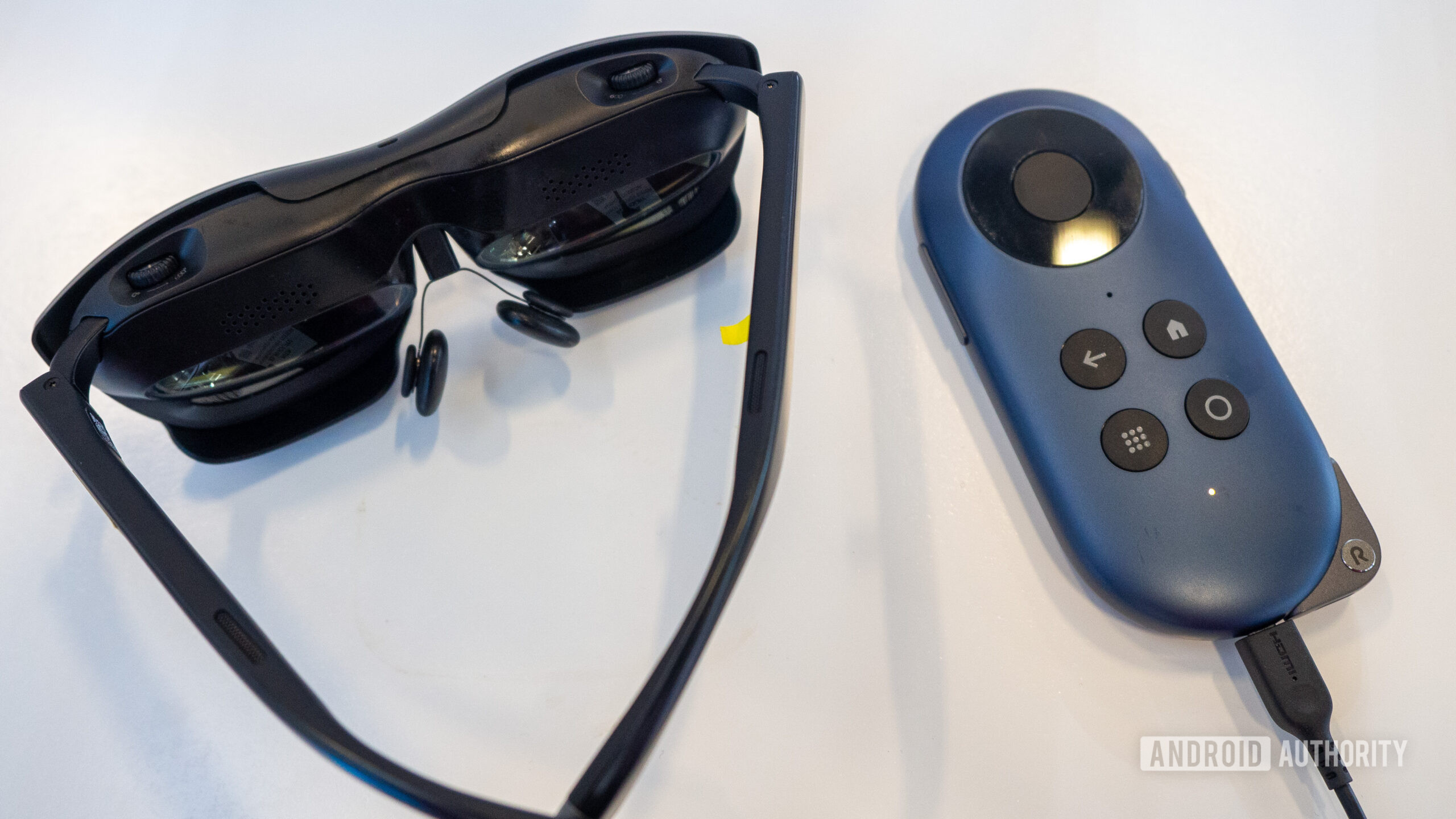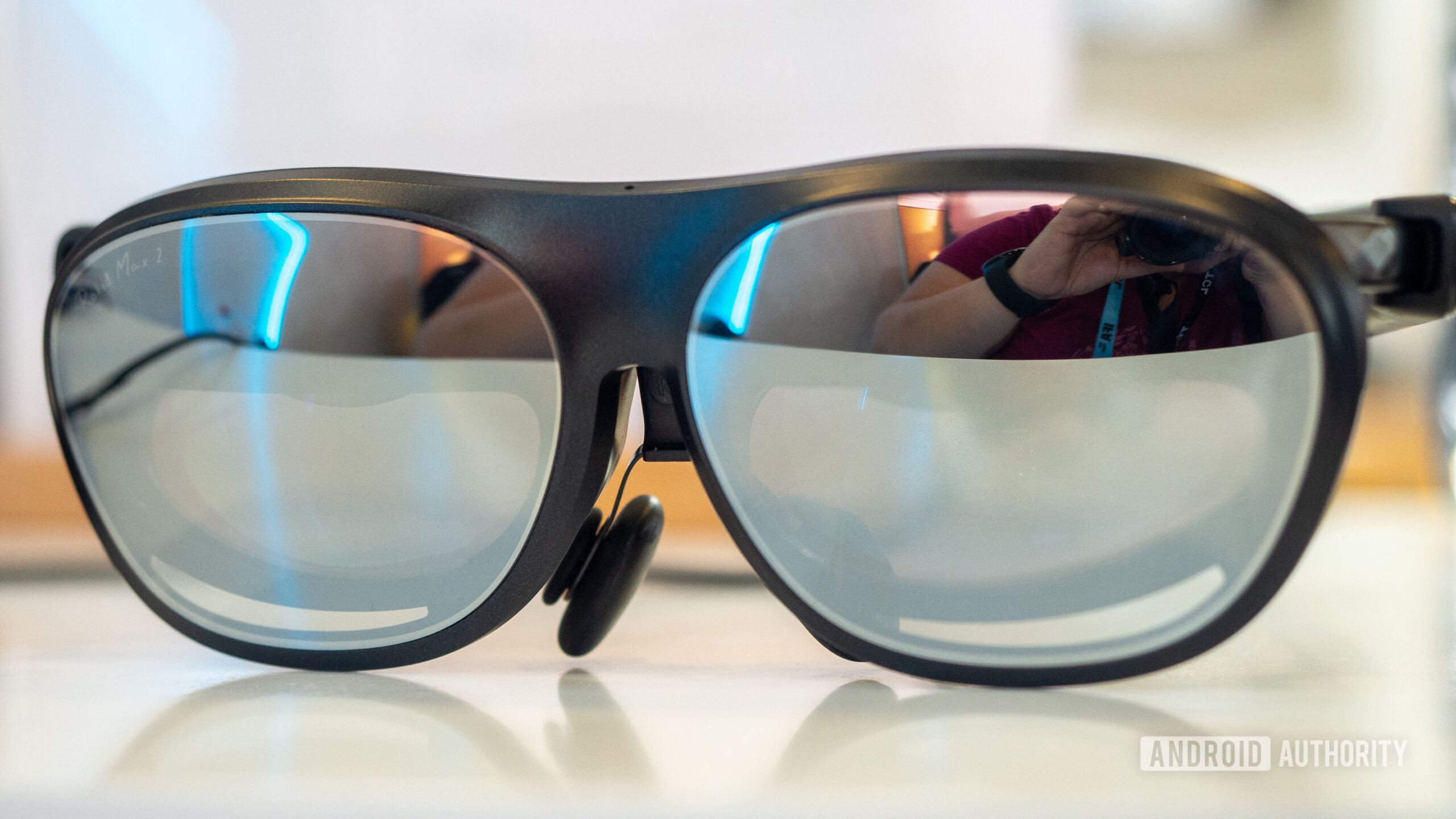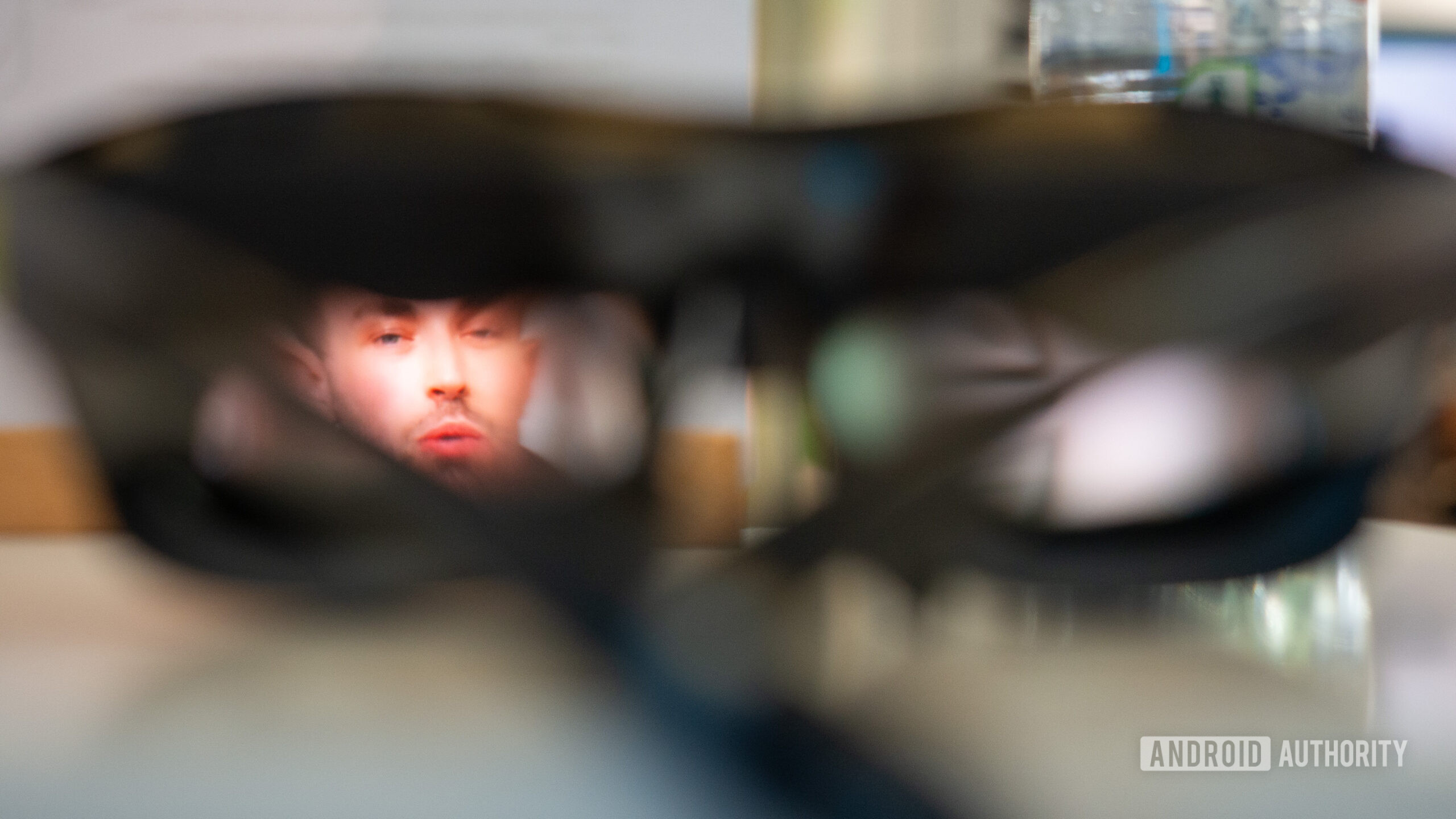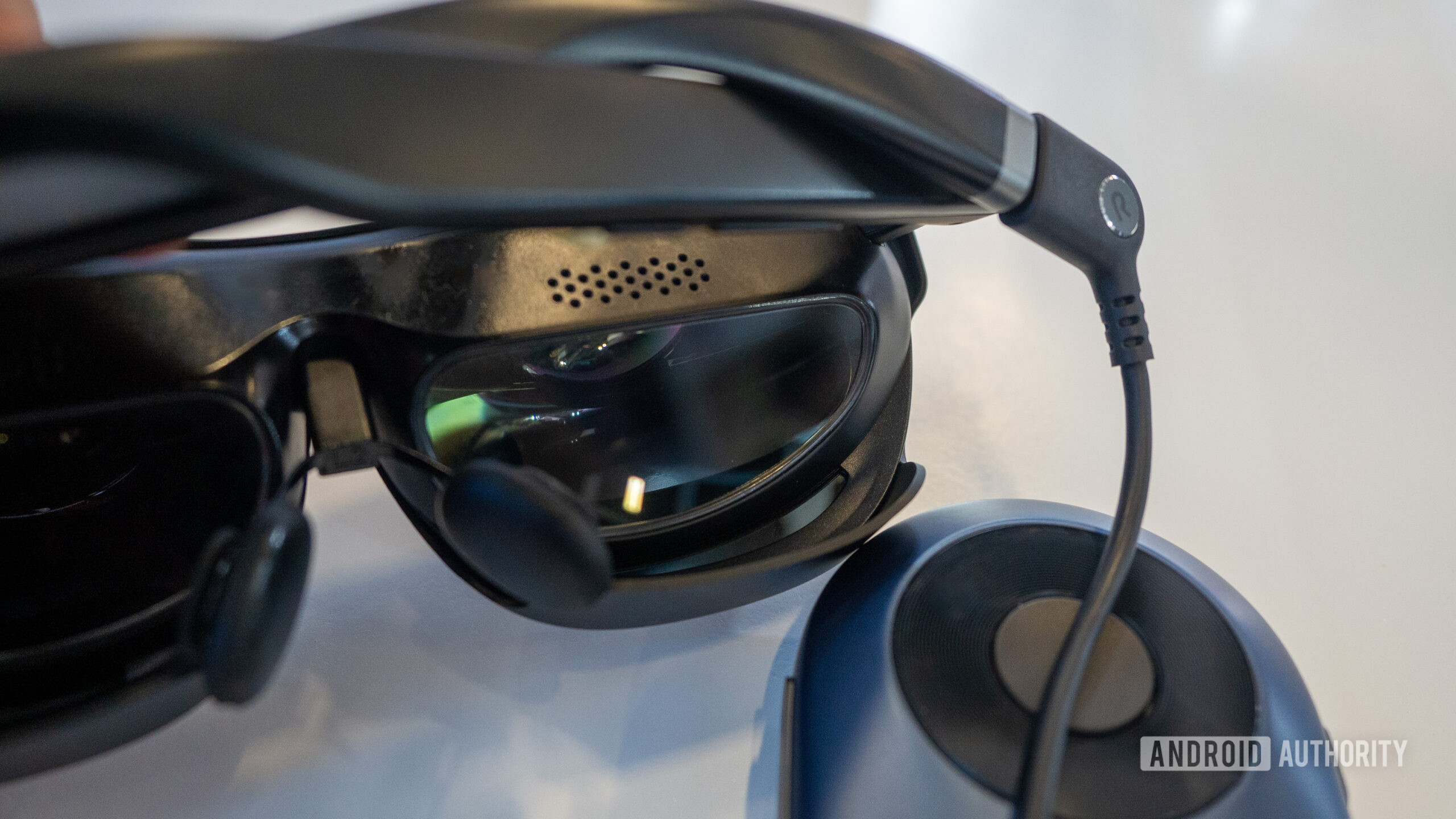
Rita El Khoury / Android Authority
When I think of Android TV or Google TV, three device types come to mind: a streaming box or stick like the Chromecast or new Google TV Streamer, a projector with built-in Google TV, or an actual TV that runs Google’s platform. But there’s a fourth category that’s slowly starting to pop up: AR glasses. Yes, you heard that right. You can actually take your entire TV with you, in your pocket, through a pair of glasses, and I got to test that out briefly during IFA.
The glasses are made by Rokid, a brand that’s been vaguely on my radar for about a year now. They’re called the AR Joy 2, and using them, in person, felt a bit too awesome and surreal. Like that first time I turned on the XGIMI Mogo Pro projector and got wowed by the fact that I could carry a big bulky TV with me anywhere as long as I grabbed that small box. But projectors need big white surfaces, a bit of darkness, and can’t be used on a plane or in a cafe. AR glasses can.
And that’s where the wow effect really got me. Rokid’s glasses plug into the company’s Station, a small, portable unit that runs Android TV. The Station is the brain of the operation; it’s basically a Chromecast, a remote, and a power bank in one. It has a 5000mAh battery, USB-C, micro HDMI output, a D-pad, and a couple of essential buttons including volume controls. It fits nicely in my hand, and I can easily imagine stowing it in a backpack for a trip.
Plus, since it runs Android TV, it’s essentially a cast target, too. That doesn’t seem like something I’d use too much, though. On a plane — or in any offline setting — the best use case for me would be to install a local video player like MX Player and play some saved movies or videos. Then, when I’m able to connect to Wi-Fi or tether to my phone in an airport, café, hotel, or train, I could use all of my Android TV apps normally.
The Rokid Station is a Chromecast, a power bank, and a remote in one.
It’s a shame that the Station isn’t Google TV certified, though. I expect any product in 2024 to have received Google’s higher honor, but there are still some stragglers like this Rokid unit. For now, the experience isn’t that different, but the Android TV interface isn’t getting many updates compared to Google TV, it lacks multi-user support and, for some weird reason, the ability to control playback speed in YouTube.

Rita El Khoury / Android Authority
Besides the Station, the real new element here is the Max 2 glasses. I haven’t tested the first generation, but these were light, comfortable, and just so easy to use. I adjusted the nose pads for a better fit, then adjusted the focus for both of my eyes and off I went. The glasses didn’t cause pressure around my temples, felt soft against my ears, and their sound was decent enough.
Even on a busy tech convention floor, I had my own TV for my eyes and ears only.
On the busy IFA show floor, I had my own TV in front of my eyes and my eyes only, with sound playing just for me. It felt so simple and yet so cool. I went to our Android Authority YouTube channel and started playing videos. It’s tough to show it in still images, but the 1080p display was big, bright (600nits), and very responsive (120Hz).
Here is our own Paul Jones’ beautiful distorted face, as seen through the glasses. I promise he looks better when you wear them near your eyes.

Rita El Khoury / Android Authority
However, the experience was a bit disorienting with all the ambient light streaming in, so I used the black-out shades that come with the kit to create more contrast and remove all of the nearby distractions. The volume is another story, though. By design, the AR Joy 2 leaves your ears open and plays the audio directionally at you. It works, especially if you want to remain aware of nearby sounds and airport or train announcements. But if you want some isolation and a louder volume, you’re out of luck, or at least you have to wear separate Bluetooth buds.
Plus, the glasses’ USB-C port allows it to be connected to more than just the Rokid Station. So, if you don’t care about the Android TV experience but still want a big screen anywhere you go, you can use the Max 2 glasses with DeX on your Samsung phone, the USB-C DisplayPort on any Android phone or laptop, the iPhone 15 and 16 series, the Steam Deck, or — with some adapters — any PlayStation, Xbox, or Nintendo Switch.

Rita El Khoury / Android Authority
Personally, the main appeal for me would always be the full Android TV experience. Every time I go back home to Lebanon, I remember that I have a 55-inch TV that I’ve uninstalled and disconnected because I don’t live there anymore. And it’s never worth it to reconnect and install it when I’m just there for 10-14 days tops. So I end up watching TV on my tiny 13-inch laptop screen or 10-inch tablet display. Something like these glasses would be a welcome and easy-to-carry upgrade. The same can be true when flying since I usually travel on trains and short-distance flights that don’t offer in-flight entertainment. Or in hotels when I don’t want to stare at a tiny screen.
I am, however, curious about the usability of these glasses with something like a Pixel 9 Pro which supports DisplayPort out of the box, or with my MacBook. Could I use them in AR mode to create a secondary display next to my laptop? That seems feasible on paper, but it’s worth testing to see how useful it’d be in real life.





